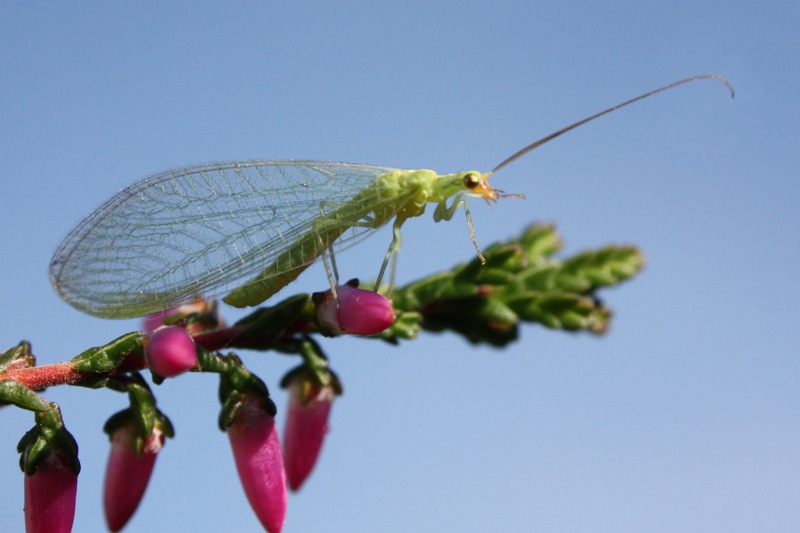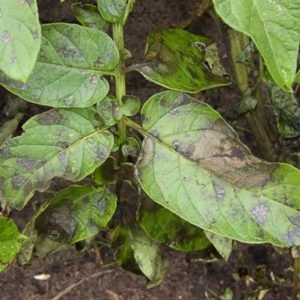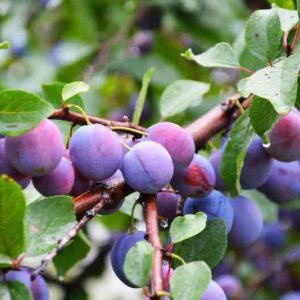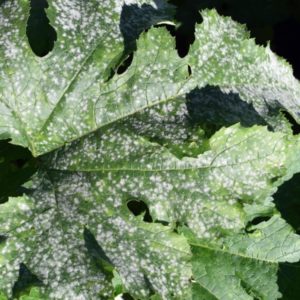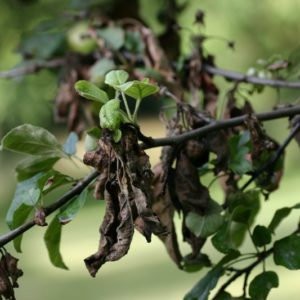The green lacewing also called the golden-eyed damselfly or aphid lion is a formidable ally of the gardener in his fight against pests. The larvae are, in fact, very fond of aphids.
The green lacewing: identity card
The vernacular (French) name of the green lacewing gathers three distinct species, but difficult to separate as they resemble each other. The main difference lies above all in the habitat of each of them:
Chysoperla carnea is found throughout France and is mostly active at tree level.
Present in the north and west, the habitat of Chysoperla kolthoffi corresponds to what is called the herbaceous layer (gardens, vegetable gardens, etc.).
Finally, Chysoperla Lucasian is found mainly in the Mediterranean region and also inhabits the herbaceous layer.
Description
green lacewing adults measure between 23 and 30 mm. They have a slender and elongated body, green in color. Their thorax and abdomen have a thin yellow dorsal stripe. During hibernation, the green lacewing takes on a yellowish to reddish-brown tint.
The larvae have a size which changes according to their stage of development. They thus pass from 2 mm in the first stage to about 8 mm in stage three. Their body is tapered, yellowish-brown in color and bristling with hairs on the sides. Its major distinguishing feature is its mandibles which are disproportionate to its head.
Biology
Adults are active at night from spring to fall. Like ladybugs, as winter approaches, the days get shorter and temperatures cooler, green lacewings change color, congregate for shelter, and hibernate for several months. The following spring, they regain their characteristic green color and enter the breeding season fairly quickly.
Depending on the quantity and quality of the food, the female lacewing can lay more than 20 eggs per day. These hatch after 4-10 days and the resulting lacewing larvae reach the adult stage in 2-3 weeks.
Benefits of the green lacewing for the gardener

The presence of green lacewing in a garden offers a double advantage:
- As adults feed on nectar and pollen, among other things, we can classify this insect in the category of pollinators, indisputable allies in a vegetable garden or orchard.
- The lacewing larvae, in turn, consume many pests and pests in the garden. Indeed, even if they are fond of aphids, they do not neglect thrips, whiteflies and mealybugs.
How to attract green lacewing to your garden?

Since the staple diet of adults is mostly nectar and pollen, your garden must have many flowers that will alternate in bloom with the seasons. Several options are available to you:
- For a vegetable garden, decorate it with a few flowering varieties of perennials or annuals.
- As for the garden, arrange spaces with many flowers such as beds, borders, or even a flowery meadow.
For the hibernation period, you can also set up an insect hotel or have some potential refuges like a pile of leaves, an upturned tile, etc.
Larvae with gargantuan appetites, adult pollinators; As you will have understood, the green lacewing is, therefore, a formidable ally for the gardener and it will know how to help you whether in the vegetable patch or the garden.
